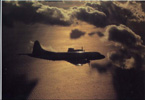ChezDaJez
Posts: 3436
Joined: 11/12/2004
From: Chehalis, WA
Status: offline

|
quote:
I am hoping there is someone out there on the forum who knows enough about the maneuverability of the P-38 versus one of the single engine fighters to give us a comparison. Like "It's a little less than this one" or "It's about equal to that one" or something along those lines. I would be guessing.
This is from http://www.spitfireperformance.com. It has several P-38 performance tests for the P-38G-L models that were conducted in 1943 and 1944 by the USAAF at Wright Field and in Florida. Here is an excerpt:
quote:
Flight Tests on the Lockheed
P-38J Airplane, AAF NO. 43-28392
Using 44-1 Fuel
I Introduction
Flight test have been conducted at Wright Field on the P-38J-15 Airplane, AAF, No. 28392 at the request of the Power Plant Laboratory, Engineering Division. These tests were made to determine the increased performance of the airplane using the higher powers allowable by the use of 44-1 fuel as compared with the powers allowable with the standard fuel, grade 100/130, Spec AN-F-28. From 6 April to 24 June 1944 approximately 30 hours were flown on the airplane by Major F. A. Borsodi, Major G. E. Lundquiest, Captain Z. D. Fountain, Jr., Captain E. W. Lesch, and Captain J. D. Onerem. Approximately 18 hours were flown on the original engines, the remainder with a new right engine.
II Summary
The P-38J-15 is a twin-engine, high altitude interceptor-fighter. The airplane performs well at high altitude, having a good maneuverability and radius of turn when using maneuvering flaps. The rate of roll is fair at medium speeds and slow at high speeds because of high aileron forces. This is improved in later models by the use of aileron boost.
Unfortunately it doesn't have much data on the L model beyond speed trials at various altitudes. The site does contain performance tests and charts for the P-51 and P-47 plus all variants of Spitfires. It is mainly oriented towards the European theater in aircraft comparisons.
Anyways, read through it and see if it helps.
Chez
< Message edited by ChezDaJez -- 9/15/2006 8:46:29 AM >
_____________________________
Ret Navy AWCS (1972-1998)
VP-5, Jacksonville, Fl 1973-78
ASW Ops Center, Rota, Spain 1978-81
VP-40, Mt View, Ca 1981-87
Patrol Wing 10, Mt View, CA 1987-90
ASW Ops Center, Adak, Ak 1990-92
NRD Seattle 1992-96
VP-46, Whidbey Isl, Wa 1996-98
|
 Printable Version
Printable Version













 New Messages
New Messages No New Messages
No New Messages Hot Topic w/ New Messages
Hot Topic w/ New Messages Hot Topic w/o New Messages
Hot Topic w/o New Messages Locked w/ New Messages
Locked w/ New Messages Locked w/o New Messages
Locked w/o New Messages Post New Thread
Post New Thread